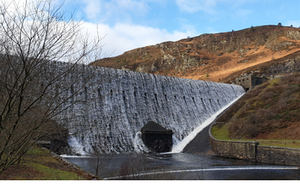European rivers are fragmented by more than one million barriers
ISPRA has participated in a study on barriers on European rivers published in the magazine Nature
Europe's rivers are fragmented due to more than a million barriers (e.g. dams), according to an overall assessment published in Nature this week. The study includes the monitoring of more than 2,700 km of waterways, from which it can be assumed that the number of reefs in Europe is underestimated by 61%.
European rivers are fragmented by more than one million barriers, such as dams, according to a comprehensive assessment published in Nature this week. The study includes a survey of more than 2,700 kilometres of rivers, which suggests that the number of barriers in European rivers has been underestimated by 61 per cent.
Rivers are important ecosystems that also provide socio-economic services for society. However, human activities have altered their flow with artificial barriers such as dams, weirs and fords. Fragmentation can affect the ecosystems of the rivers but assessing the effects of these barriers has been impeded by a lack of information. Barbara Belletti, Carlos Garcia de Leaniz and colleagues collated regional, national and global datasets to assess the number of individual barriers on rivers, as part of the AMBER project (Adaptive Management of Barriers in European Rivers). They walked along selected stretches of rivers to record barrier numbers and characteristics, revealing that the original datasets tended to undercount small barriers.
Using field-corrected and upscaled estimates, the authors found that there were 1.2 million in-stream barriers across 36 European countries. Of these barriers, 68 per cent were small structures (under two metres in height), which are often overlooked by traditional surveys. The majority of barriers were built to control water flow, such as weirs or dams, or accommodate road crossings. The highest barrier density is in Central Europe, while the lowest barrier densities are in Scandinavia, Iceland and Scotland. No river catchment in Europe is free of artificial barriers, but rivers in the Balkans, and parts of the Baltic states, Scandinavia and southern Europe are still relatively unfragmented. The authors suggest that these findings should help to inform the implementation of the EU Biodiversity Strategy, which aims to reconnect European rivers by 2030.
Video "Adaptive Management of Barrier In European Rivers - AMBER"

